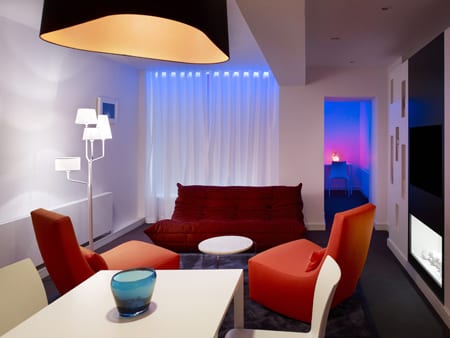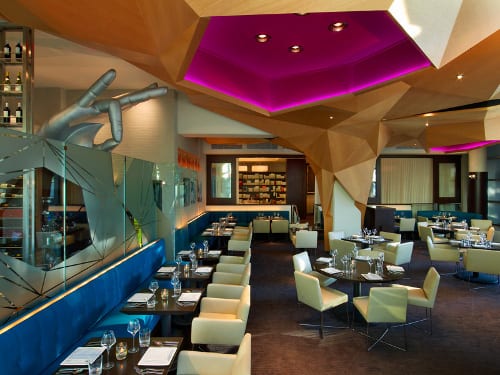Hospitality Design (HD) magazine and Culintro, a culinary trade organization in New York that brings together restaurant professionals, have teamed up to bring a monthly online Q&A with some of the nation’s top restaurant designers. Each month, we will feature a Q&A with an industry leader, talking about his/her newest project, the industry, what works, and what’s next.
 Beth Scott
Beth Scott
Vice President of Restaurant Concepts
Hilton Worldwide
Thanks to Beth Scott, Hilton Worldwide is taking a new approach to F&B. The recently appointed vice president of restaurant concepts has come up with a new type of matchmaking service, which pairs full-service Hilton hotel owners and participating restaurant companies. As she says, the site www.hiltonrestaurantconcepts.com “provides a way for our stakeholders to access information easily and provide them with F&B solutions that fit their needs.” Here she talks about getting inspiration from an online dating site, working in China, and dreaming about pork shank.
HD: Did you always know you wanted to go into hospitality?
BS: No, I actually have a degree in finance. I had dreams of making it big on Wall Street. However, after two years of dissecting numbers versus recipes, I realized it was time to follow a different course. I worked in restaurants throughout college in Boston and I realized many of my fondest memories were of those jobs. So, I changed careers and joined Planet Hollywood as a management trainee.
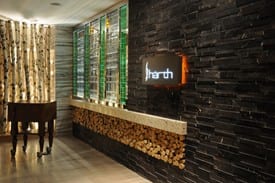 HD: So how did you end up where you are today?
HD: So how did you end up where you are today?
BS: My F&B career began with Planet Hollywood. Then, I moved to the House of Blues and then on to Todd English’s restaurant empire prior to joining Loews [as vice president of food and beverage, responsible for all the F&B outlets group-wide]. My career has been about morphing, just as restaurants do. I utilized my skill set to enter into new avenues of the same business. When I worked with Todd, we were doing restaurants in hotels. I questioned why hotels couldn’t innovate and create their own restaurants. So, when the opportunity arose, I jumped at the chance to bring an entrepreneurial spirit to restaurants within the hotel environment.
HD: What did you learn there?
BS: I learned that it was hard to get change implemented without lots of perseverance.
HD: What was one of your favorite projects?
BS: Loews Philadelphia. We took a standard, all-day-dining hotel restaurant and turned it into an independent, uniquely identifiable restaurant that both hotel guests and local clientele embraced.
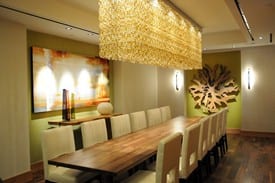 HD: You also worked as a consultant in China with your namesake firm. What were some of your most interesting projects?
HD: You also worked as a consultant in China with your namesake firm. What were some of your most interesting projects?
BS: I helped a local Chinese company open an American diner. While many Chinese had begun to experience Western cuisine and culture by way of fast food, there was a keen interest in the American comfort foods that we take for granted. However, salad was not embraced. Additionally, there were expats who were grateful to have some of those comforts in a very foreign place. So, seeing the two worlds experience the same food completely different was quite interesting.
HD: What do you think about the China market?
BS: It’s certainly a challenge.
HD: Why did you want to join the Hilton team two years ago?
BS: Here was a large hotel company saying, ‘We want our F&B to be better’- the chance to come into such a large organization that was embracing change was extremely enticing. Additionally, there are so many great brands from Embassy Suites to Hilton Hotels & Resorts to Waldorf Astoria. The chance to help define those brands through F&B is a chance of a lifetime.
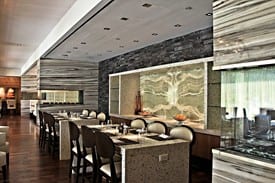 HD: Your website initiative for Hilton is pretty groundbreaking. How did you come up with the idea? What was the inspiration?
HD: Your website initiative for Hilton is pretty groundbreaking. How did you come up with the idea? What was the inspiration?
BS: That’s easy….it was born out of the overwhelming task I was facing. Some hotels need to outsource their restaurant. Given the size of our hotel portfolio, it became quickly obvious to me that I could never personally advise each hotel on who or what concept could be appropriate for their particular market and how they could find third-party partners. At the same time, a friend was telling me her stories of using match.com to find dates. Suddenly it dawned on me that we could utilize the same strategy for hotels and restaurants.
HD: Walk us through it. How does it work?
BS: There are two options. Hilton Worldwide stakeholders can either view all the concepts available, or, after filling out a brief questionnaire, the system will provide a perceived match based on the questionnaire and the restaurant concepts’ requirements. If interested, the hotel can contact the designated restaurant representative directly.
HD: How did you pick the restaurant companies currently engaged on the website?
BS: The site launched with 15 companies, including such well-known foodservice brands as Ruth’s Chris, Coffee Bean and Tea Leaf, Mitchell’s Fish Market, and others. The internal goal is to have 50 by year-end. The restaurant concepts on the site also include four turnkey solutions that we developed and are currently available to owned and managed properties.
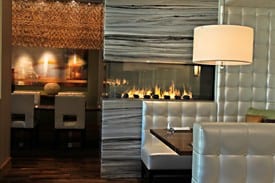 HD: What has the response been from the owners?
HD: What has the response been from the owners?
BS: There has been a great positive response. To date, there have been 500-plus unique users on the site, which includes owners, general managers, and additional stakeholders.
HD: In an industry about uniqueness and sense of place, are you worried the website may muddle that experience at all?
BS: Not at all. We are not proposing that the same answer is right for all. But, we don’t need to reinvent the wheel every time we open a hotel. This site is about making a match and connecting the right concept with the right hotel.
HD: The newly renovated Hilton McLean Tysons Corner has its own restaurant concept Harth. What is the idea behind it?
BS: This is all about warmth and comfort and providing our guests with the feeling you get when you huddle around the oven at home. The food is simple and approachable, yet interesting. The same could be said about the design.
HD: Will it be rolled out?
BS: If Harth is successful, it would have the potential to roll out to other markets. But it’s not our intention to force it into locations that don’t make sense.
HD: Will Hiltons have the opportunity to still create their own concepts like this one?
BS: Absolutely.
HD: What do you love about restaurants?
BS: Restaurants are the perfect storm. All senses come together in one place-taste/smell/sight/touch/hear. There are very few places that can do that. The social aspect is also extremely interesting; people are interesting!
HD: What are the keys to a successful restaurant?
BS: In my opinion, a simple formula…good food, good ambience, good service.
HD: What is one thing designers have to remember when designing a restaurant?
BS: Practicality of service. Sometimes, whether it be wall finishes or fabric specifications, we need to ensure they will sustain a restaurant environment.
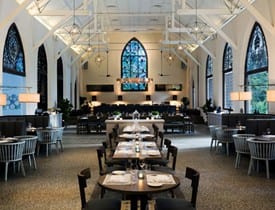 HD: What is one restaurant you love for its food?
HD: What is one restaurant you love for its food?
BS: This is the toughest question…my favorite restaurant is Crispo in NYC. He makes the most amazing pork shank I have ever had. Actually, I dream about this pork shank regularly!
HD: For its design?
BS: There is a restaurant called the White Rabbit in Singapore. I love restaurant designs in converted spaces and this was an old chapel in the Dempsey area of Singapore.
Pictured from top left: Beth Scott; Harth restaurant at Hilton McLean Tysons Corner (four photos); White Rabbit, Singapore

